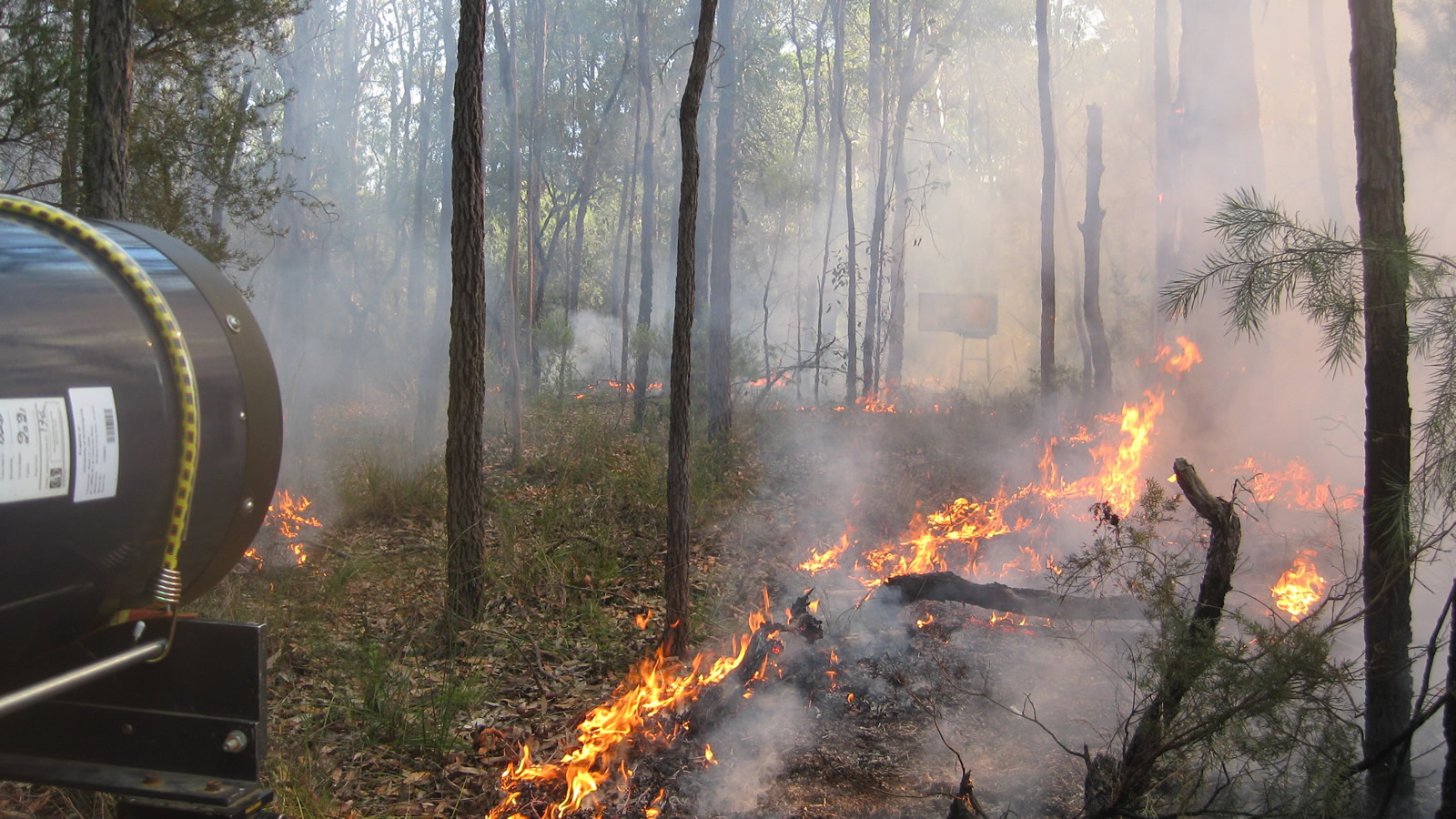Fire emissions
Fires are highly variable in their extent and intensity and are a major contributor to variability in the composition of the lower atmosphere. Finding methods to accurately quantify the emissions from vegetation fires is therefore crucial to building a realistic simulation of the atmosphere. The frequency and ferocity of fires in Australia are predicted to increase under the influence of climate change so fire occurrence in coming decades will have far-reaching effects on the cleanliness of the global atmosphere, greenhouse warming, urban pollution, human health and plant growth.
Contact: Clare Murphy
Measuring emissions
Open-path Fourier transform spectrometers operate with a line of sight near the ground from the instrument (via a telescope) to a set of retro-reflectors (mirrors). The frequencies of absorption features in the recorded spectra can be used to identify the gases in the atmosphere and the strength of absorptions used to quantify the amount of each gas present. CAC’s dedicated set of equipment is shown making measurements of gas concentrations in smoke plumes at a hazard reduction burn at Bent’s Basin, near Sydney.
